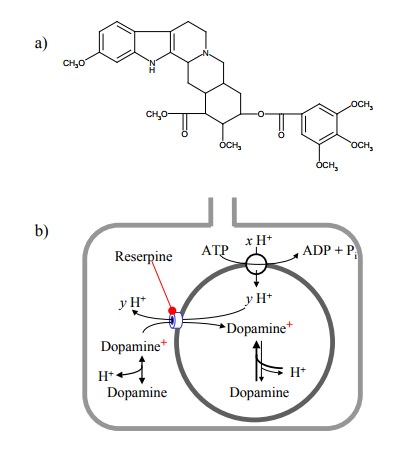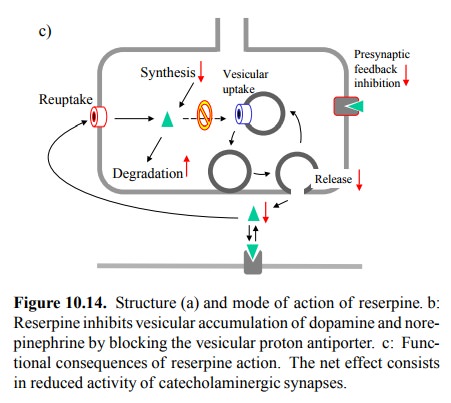Chapter: Biochemical Pharmacology : G protein-coupled receptors
Inhibition of vesicular storage
Inhibition of vesicular
storage
Vesicular
accumulation of catecholamines and of serotonin is inhibited by reserpine
(Figure 10.14a). While reserpine initially was believed to inhibit the H+-ATP'ase
that gener-ates and maintains a high proton concentration inside the vesicles6,
it is now clear that reserpine instead binds to the vesicular transmitter transporter
that makes use of this pro-ton gradient to move the transmitter uphill its own
gradi-ent into the vesicle (Figure 10.14b). The number of protons released for
the import of each transmitter molecule is not known with certainty but is
likely greater than 1.


Reserpine
affects both the central nervous system7 and the peripheral
autonomic system. The immediate effect will be the accumulation of transmitter
in the cytosol. From there, it may `spill over', possibly by retrograde
operation of the specific reuptake transporters, into the synaptic cleft.
Accordingly, a transient `sympathomimetic' effect may be seen after application
of a high dosage of reserpine. How-ever, the cytosolic transmitter excess will
soon be scav-enged by increased breakdown and inhibition of synthesis, and the
main effect of inhibited synaptic transmission will become manifest (Figure
10.14c). The action of reserpine was initially observed in an extract of the
Indian plant Rau-wolfia serpentina, which was noticed to have antipsychotic
effects8. After it was purified, the drug was used initially in the
same application but later on was mainly used for anti-hypertensive treatment.
It now has largely been abandoned in favour of more selective agents.
Related Topics